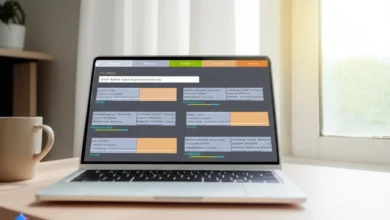
Getting better results from AI depends upon the way you ask them the right way. These eight reframing techniques will help you shift your perspective and unlock more creative, useful responses from any AI system.
1. Benefit – Reframe Limitations as Hidden Strengths
Turn what seems like a problem into an advantage. This technique helps you find value in constraints and challenges.
Example prompts:
- “How can having a small marketing budget actually give our startup a competitive edge over larger companies?”
- “What advantages do introverted leaders have that extroverted ones might lack?”
- “How might working from home create stronger team bonds than traditional office environments?”
2. Future Shift – Position the Prompt in a Future Setting
Move your question forward in time. This creates distance from current assumptions and opens up new possibilities.
Example prompts:
- “It’s 2030. Remote work has completely transformed how we think about productivity. What does a typical workday look like now?”
- “Looking back from 2035, what were the three key decisions that made sustainable energy inevitable?”
- “In 2028, AI tutors have revolutionized education. How do students learn differently than they did in 2024?”
3. Empowerment – Reframe to Promote Action or Agency
Shift from passive observation to active engagement. This technique focuses on what someone can do rather than what’s happening to them.
Example prompts:
- “What three actions can a new manager take this week to build trust with their team?”
- “How can someone turn their daily commute into a learning opportunity?”
- “What steps can a small business owner take today to recession-proof their company?”
4. Curiosity – Make it Exploratory and Open-Ended
Transform direct questions into investigations. This approach encourages deeper thinking and unexpected connections.
Example prompts:
- “What might we discover if we approached customer complaints as treasure maps instead of problems?”
- “I wonder what would happen if schools started teaching failure as a core subject?”
- “What patterns might emerge if we tracked the questions people ask during their first week at a new job?”
5. Constraint-to-Opportunity – Show How Limits Inspire Innovation
Reframe restrictions as creative catalysts. This technique reveals how boundaries can spark breakthrough thinking.
Example prompts:
- “How has having only 280 characters on Twitter actually improved the quality of public discourse?”
- “What innovations have emerged specifically because of smartphone screen size limitations?”
- “How do writers with dyslexia develop storytelling techniques that others miss?”
6. Opposite View – Flip the Perspective or Core Assumption
Challenge the premise by examining its reverse. This creates fresh angles on familiar topics.
Example prompts:
- “Instead of asking how to retain employees longer, what if companies designed roles for natural turnover?”
- “Rather than making meetings more efficient, what would happen if we made them deliberately slower?”
- “What if the goal of customer service was to have fewer conversations, not more?”
7. Metaphor-Based – Recast the Idea Using a Metaphor or Analogy
Use familiar concepts to illuminate complex topics. Metaphors make abstract ideas concrete and memorable.
Example prompts:
- “If a company’s data strategy were a garden, what would healthy soil look like and what weeds should we watch for?”
- “Treating a product launch like planning a dinner party, what are the essential ingredients for success?”
- “If workplace culture were weather, how would you forecast and influence the climate in your organization?”
8. Systemic Reframe – Zoom Out to Reveal Systemic Causes or Effects
Step back to see the bigger picture. This technique uncovers root causes and wider implications.
Example prompts:
- “What systemic factors make it difficult for talented employees to advance, beyond individual performance issues?”
- “How do urban planning decisions from 50 years ago still influence today’s traffic patterns and community health?”
- “What interconnected systems would need to change for four-day work weeks to become standard across industries?”
Transform Your Next Conversation
These reframing techniques work because they shift your mental model before you ask the question. They help you escape default thinking patterns and approach problems from angles you might not have considered.
Try picking one technique that feels unfamiliar and use it on a challenge you’re currently facing. You might be surprised by what emerges when you change not just what you ask, but how you ask it.






